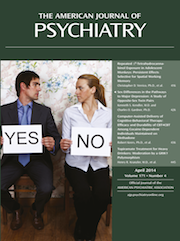After graduating from residency, it is easy to prescribe medications based on anecdotal experiences with psychotropics, what your attendings told you worked best, or the abstract of a recent article. While adjusting to the rigors of a new job, particularly a teaching role, following familiar patterns from residency can feel like a security net. However, a book like Clinical Psychopharmacology: A Practical Approach reminds us of the science behind the medications we use in psychiatry.
The book is small in size, with a total of 308 pages, divided into 19 chapters. The earlier chapters cover broad topics like absorption and metabolism of medications, as well as neurotransmitters and receptors. While these chapters are necessarily simplistic, it is important to understand these topics in order to fully comprehend the latter chapters, which discuss classes of medication like antipsychotics, antidepressants, and benzodiazepines. After laying out this groundwork, the authors discuss individual medications and treatments as a whole for certain disorders (i.e., anxiety disorders, mania, bipolar depression, attention disorders, dementia, and alcohol use disorders). The final chapter focuses on drug-drug interactions, with an especially helpful but brief appendix regarding review questions limited to the final chapter. Although thorough, the chapters are further divided into subtopics that at times require jumping back and forth between pages to obtain specific information.
The book has multiple tables and charts that are demonstrative and easy to follow. Marin and Escobar analyze relevant studies, including CATIE (Clinical Antipsychotic Trials of Intervention Effectiveness), CUtLASS (Cost Utility of the Latest Antipsychotic drugs in Schizophrenia Study), STAR-D (Sequenced Treatment Alternatives to Relieve Depression), and STEP-BD (Systematic Treatment Enhancement Program for Bipolar Disorder), among others, using evidence-based recommendations for specific treatments. Less helpful are their “bottom line” recommendations that, at times, seem less feasible to follow. For example, in discussing extrapyramidal symptoms related to antipsychotics, they recommend, “whenever possible, decreasing the antipsychotic dose or switching medications rather than using adjunctive medication to control the adverse effects (p. 41).” This would be an ideal recommendation if you are treating a medication-naive patient, or one with few medication trials. I think, however, this recommendation should have been further expanded to discuss when, as often happens, you cannot apply their initial recommendation.
I would also have liked to see the authors include a cost comparison between medications. Furthermore, an exploration of the use of these medications in subpopulations would have been helpful. For example, they discuss the use of antidepressants during pregnancy but not antipsychotics, mood stabilizers, or anxiolytics. Recommendations are limited to adults and not for children or adolescents.
This book will be useful to young trainees, particularly medical students and residents, and seasoned psychiatrists, as well as beneficial to those in other disciplines, like family practitioners, internists, psychologists, and nurse practitioners. Despite some limitations, Clinical Psychopharmacology is a practical teaching tool that provides updated information on psychotropic medications. It is easy to assign a short reading assignment to trainees that is understandable, succinct, and readily applicable to their everyday clinical practice. As an early-career psychiatrist, I find this book a helpful evidence-based adjunct to my anecdotal experiences during residency.

